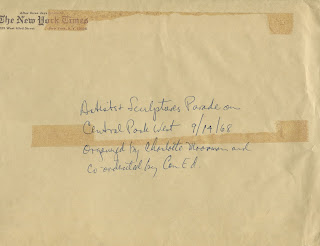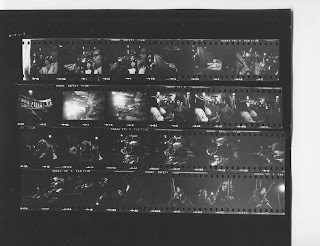The Syeus Mottel Photographic Archive; Mock Book Preparation & Creation
abstract, Research, catalog, tag/itemize photographic archive of Syeus Mottel, for preparation of mock book. The main focus of the photographic archive is ‘socio-cultural documentation of the years between 1965-1981. The majority of the photography is from New York City, but also included are photographs of California, Rome, Paris, and more. Review of the archive is needed. So far, there is no tangible index of what is contained in the archive, besides the scanned manilla cover envelopes in which the contact sheets/negatives were located. Once the work can be entered into a searchable data system, critical evaluation can commence.
introduction,
The Syeus Mottel photography archive is a socio-cultural document of the years 1965-1981. This historical record of noted cultural & political events enables the viewer of the work to gain a new perspectives in an otherwise oversaturated marketplace of ‘vintage photography’. This work for the most part will be viewed by an audience for the first time. Limited professional publication of Syeus Mottel’s photography was released into the public domain during Mottel’s lifetime. Syeus Mottel preserved his photographic archive in its original manilla envelopes, with date/subject matter notated by hand-writing on each cover. Over 500 envelopes with contact sheets and negatives were stored in Syeus Mottel’s apartment. Upon Syeus Mottel’s death in January 2014, Matthew Mottel has been responsible for the archive. Matthew Mottel has initiated a first digitization, whereas the cover’s of the manilla envelopes and contact sheets have been scanned and organized onto a hard drive. This hard drive has over 500 folders that need to be reviewed, and properly indexed into a searchable database. Once this is done, a determination of the multitude of subjects with the archive can be annotated, and decisions regarding importance in relationship to contemporary aesthetics and interests can be made. At this point, 60-100 images can be selected to make a mock-book which would be the first major survey of Syeus Mottel’s work to date.
background,
Syeus Mottel (1930-2014), was a published photographer, notable for his documentation of Lee Strasberg and the Actors Studio and Buckminster Fuller. In 1973, he published a photojournalistic book entitled ‘Charas, The Improbable Dome Builders’, documenting the attempt to build geodesic domes on the Lower East Side on Manhattan. He also appears as the credited photographer in William Greaves Symbiopsychotaxiplasm. In 1965, Lee Strasberg of the Actor's Studio granted him exclusive permission to photograph at the Actor's Studio. This resulted in a ten year photographic archive of the Studio from 1965-1975. His photographic mentor was Bruce Davidson of Magnum Photography. He then became Media Consultant to R. Buckminster Fuller, with his media documentation of Fuller's activities widely published. When asked what his photographic method was, Mottel replied 'I was looking to make a diary."
work plan ,
The first step to view the archive in a stronger light is to create a database of what the content of all the envelopes contain. This will be a labor intensive, data entry process using a professional photo indexing software (tbd). One goal of the indexing process will be to tag photos using metadata to create searchable indexes ; eg ‘anti war photography’ ‘children’ , ‘civil rights’, ‘modern art’ etc. Once this step is completed, review of the work will determine the strength of the subject matter and an evaluation as to what focus on for a first publication can happen. Then photos that fit the subject matter can be cropped from the contact sheets that have been digitized and a mock book, both digitally and physically can be created.
Significance
I am acting both as curator, editor, representative and dutiful son in this endeavor. It is my goal to have my father’s work exist within curatorial photographic history of the mid 20th century. Seminal cultural and political figures in Syeus Mottel’s archive include Martin Luther King, Alan Ginsberg, John Cage, Ornette Coleman, Stokely Carmichael, MoonDog, Paul Jenkins, Robert Rauschenberg, Vito Acconci, Charlotte Moorman, Ken Dewey, Buckminster Fuller, Lee Strasberg, Miles Davis etc. Almost all of the photographs within the archive are street style photography, with very few posed & stylized photographs. Selections from this archive as a mock book will allow for a wider audience to view his work for the first time.
WORK PLAN
Week 8 - Start to itemize and catalog archive, research which software is best to use.
Week 9 - Continued work to itemize archive.
Week 10 - Database itemization, organizing completed.
Week 11 - Evaluation of materials, determination of what subjects will be focused on in book presentation.
Week 12 - Start formating digital/physical mock book.
Week 13 - Editing of photographs, reducing number of selected photos, continued work on format for digital/physical edition of mock book.
Week 14 - Completion of digital and physical mock book. Estimated number of photographs included is 60-100.

















